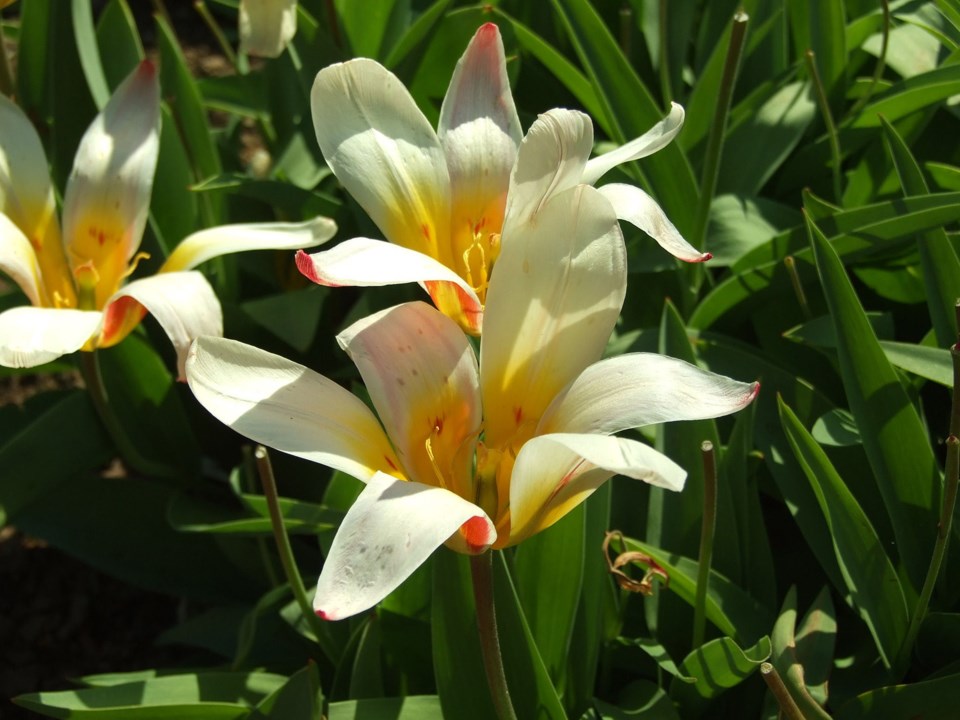Small space gardeners who have harvested most of their summer vegetables have several choices for occupying the bare earth in their containers as winter draws closer.
Fall plantings of leafy crops may be successful if the weather cooperates, nurseries sell enticing leafy plants for winter containers, or, closer to Christmas, you can get decorative berried branches which can be thrust into the soil.
One beautiful alternative is planting a bulb pot in at least one container that won’t be needed for spring vegetables. Early tulips are especially suitable since their flowers are usually over by the end of May and their leaves are dying back. This is especially good timing for adding nutrients to the pots and then putting in transplants of summer crops. Tomatoes and peppers are especially suitable for containers.
People who would like to replant the tulips next fall can lift them, let the leaves finish withering in a community pot, then store them in absolutely dry conditions. The key to re-blooming is to keep them totally dry all through summer.
The species tulips such as the Gregii and the Kaufmannia group are mostly dwarf but they are the earliest and have pretty, darkly spotted and speckled leaves.
The Emperor series of tulips, or Fosteriana, also blooms very early. Flower colours include orange, red, white and yellow in solids and bi-coloureds. The single and double early tulips also have many colours and large flowers.
The major pest of container tulips is squirrels that love to dig the bulbs up and eat them. One way of foiling them is covering the pot with wire mesh. Pea mesh can also work, though best double-layered and securely fastened.
The whole range of spring bulbs can be forced over winter, unearthed bit by bit as shoots appear in January or early February and brought inside. Development and blooming speeds up once they are exposed to house temperatures.
Hyacinths are the most popular. Generally the shorter spring bulbs make the best windowsill displays because they don’t lean. The taller tulips and daffodils tend to flop unless you stake them.
Forcing bulbs means giving them a period of moist cold, which works best if you can keep them outside by placing the planted pots in a shallow pit in the garden.
The pots should be covered with leaves, straw or something else light and airy which allows access in freezing cold. Grass clippings don’t work because they pack down.
People with no outside garden can try forcing bulbs in pots in a garage or carport. This is doable but is more work because the bulbs need to be covered so they’re in the dark and watered regularly.
All forced bulbs can be planted outside as soon as possible, and those fed after blooming can flower the next spring. Hyacinths are especially successful planted outside.



